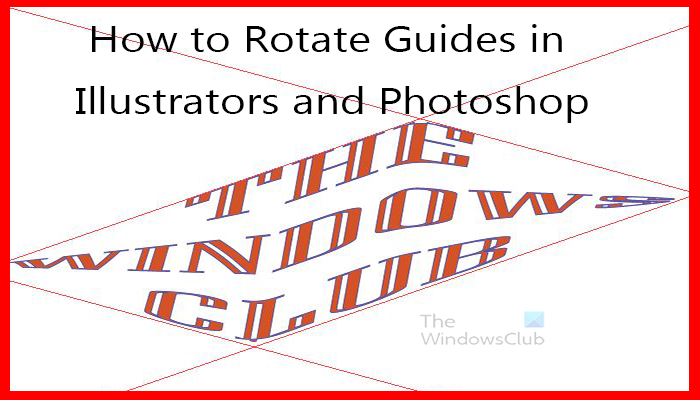Lots of people have used guides in both photoshop and Illustrator but never knew that the guides can be rotated. The guides are usually enabled by clicking the Ruler and holding the mouse button down and dragging towards the canvas. Guides can also be accessed by going to View on the Menu Bar.
How to Rotate Guides in Photoshop
There are two ways to enable the Guides in Photoshop, you can go to the rulers, click on the ruler, hold the mouse button and drag towards the canvas. A guide will appear on the canvas, if you clicked from the right ruler you will have a vertical guide and you get a horizontal guide if you click from the top ruler.
The other way to enable the guides is to go to View then New Guides.
A dialogue box will appear that gives you the option of a Horizontal or Vertical Guide and at what measurement (in inch) on the ruler you want the guide.
There is the guide on the canvas, which is a horizontal guide.
To rotate the guide, hold the Alt key, hover over the guide until the cursor becomes an equal sign with two arrows, then click on the guide and it will rotate. In Photoshop the guide will only rotate horizontal or vertical, 90 degrees from its current position. Depending on what part of the guide you hover and click, the guide will move up or down to that section of the canvas when it rotates.
Note that if the guide is locked it will not move and it will not rotate. To check if the guide is locked, go to View and see if Lock Guides is checked, if it is checked you can uncheck it. You can also use the shortcut keys Alt + Ctrl + ; to lock and unlock the Guides.
How to Rotate Guides in Illustrator
To enable the Guides in Illustrator, you can go to the rulers, click on the ruler, hold the mouse button and drag towards the canvas. A guide will appear on the canvas, if you clicked from the right ruler you will have a vertical guide and you get a horizontal guide if you click from the top ruler. Note that the Guides will not show if the Show Guides option is invisible in the View Menu. For the guides to show then the visible option in the View menu has to be Hide Guides. Therefore if you go to View then Guides and the option is Show Guides then you have to click it and the option will change to Hide Guides. You can click Ctrl + ; to show or hide guides.
Illustrator gives the option to rotate the guides in any direction at any angle. To rotate the Guides, make sure that the guides are not locked. To lock or unlock the guides go to View then Guides then check or uncheck Lock Guides. Press Alt + Ctrl + ; to lock or unlock the guides.
To rotate a guide you can click on it and go to the Transform window and type in the Angle or click the down arrow, choose an angle then press Enter.
You may also want to rotate it to a Shear, type, or choose the number that you want to shear it by.
Another way to rotate the guide is to right-click on it, go to Transform then Rotate. A Rotate option window will appear, you can type in the angle or turn the round knob. You can check Preview so that you get to see the guide move before you confirm. You can click copy to have the guide remain as it was but a copy is created that will rotate at the chosen angle. Another way to rotate the guide is to select it then go to the Tools Panel and select the Rotate Tool or click the shortcut R and then drag the guide to rotate. A crosshair will appear to show the angle or the pivot point for the rotation. You can move the crosshair to any point on the guide to move the angle/pivot point of rotation. Read: How to warp and convert Text to Shape in Illustrator
Why would I need to Rotate Guides?
As you advance in graphic design, you may have to make artwork that may not take on regular shapes. You will need to have guides that can be rotated to fit the shapes if you want proper alignment. Especially in Illustrator, you may have to design packaging that will fit on objects and they may be at angles that require guides that can match those angles.
What could Rotated Guides be used for?
Rotated Guides can be used when designing packages for products. Packaging can sometimes be shaped irregularly. You may need to use a guide to align artwork for the packaging, being able to rotate a guide will be important at that time.

